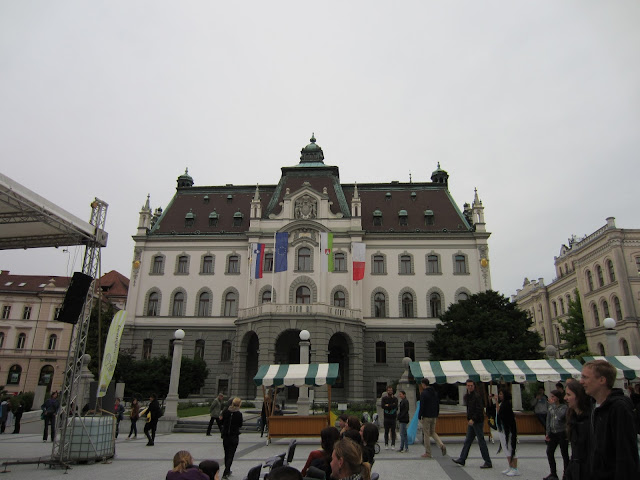At the beginning the Bosnian War of 1992-1995, Bosnia-Herzegovina had three main religious groups: Muslims (known as "Bosniaks), 44%; Orthodox Serbs, 31%; and Catholic Croats, 17%. There was also a small Jewish community.
An official census has not been taken since the war, but in 2002, according to Wikipedia, it is estimated that about 80% of Sarajevo's citizens were Muslim Bosniaks, 11% were Serbian Orthodox, 7% were Catholic Croats, and 2% were others--Jews, Romas, etc. The war obviously had a great impact on the city's diversity.
Each of the four main religions has a major building within a few blocks of each other in Sarajevo. All four buildings miraculously survived the war, although the Muslim mosque was severely damaged and required extensive renovation.
The neo-Gothic Sacred Heart Catholic Cathedral was built in 1884-1889 during the Austro-Hungarian period and was modeled after Notre Dame in Paris. It was damaged but not destroyed by shelling during the siege, and has been beautifully restored.
An official census has not been taken since the war, but in 2002, according to Wikipedia, it is estimated that about 80% of Sarajevo's citizens were Muslim Bosniaks, 11% were Serbian Orthodox, 7% were Catholic Croats, and 2% were others--Jews, Romas, etc. The war obviously had a great impact on the city's diversity.
Each of the four main religions has a major building within a few blocks of each other in Sarajevo. All four buildings miraculously survived the war, although the Muslim mosque was severely damaged and required extensive renovation.
The neo-Gothic Sacred Heart Catholic Cathedral was built in 1884-1889 during the Austro-Hungarian period and was modeled after Notre Dame in Paris. It was damaged but not destroyed by shelling during the siege, and has been beautifully restored.
 |
| Note our terrific guide Neno in lower right corner of photo |













